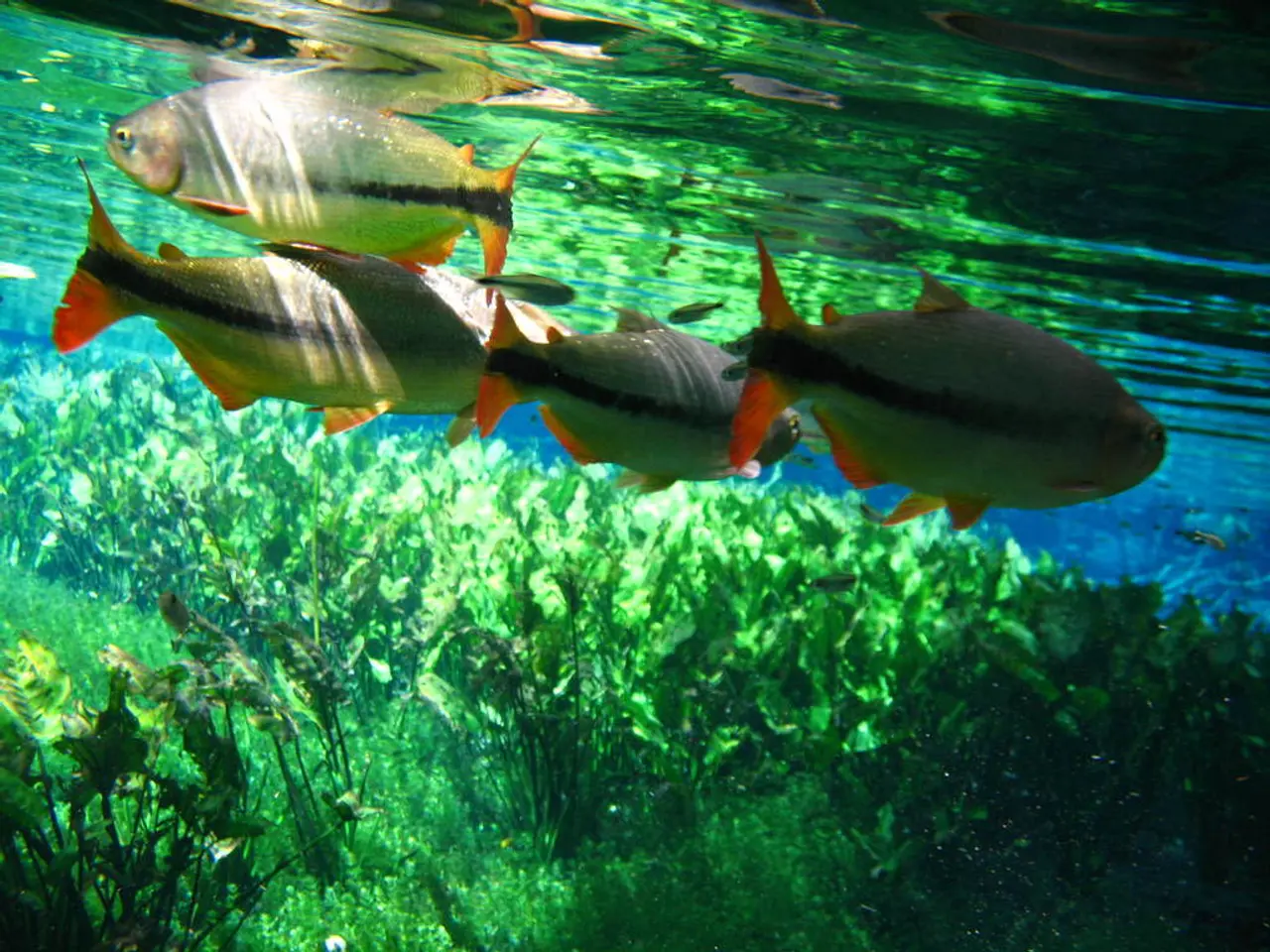Seawater quality: crucial factors to consider before taking a dip
As the summer season approaches, it's essential to be aware of potential health risks that may be lurking in lakes and other bodies of water. Understanding the conditions where harmful bacteria and pathogens like Vibrios and Cerariae thrive can help you take preventive measures.
Vibrios, found in brackish and warm waters, are common in coastal areas where saltwater and freshwater mix, particularly during heatwaves. They can cause infections known as vibriosis, which can lead to serious health issues, including sepsis and flesh-eating disease. While Vibrios are mainly found in saltier waters, such as the Baltic Sea, it's essential to be cautious when swimming in any body of water.
Cerariae, a stage in the life cycle of schistosomes, can cause schistosomiasis, a disease spread through contact with contaminated water, particularly in freshwater bodies. Although Cerariae were not specifically mentioned in the search results, it's known that they can penetrate human skin during water contact, leading to infection.
To identify and avoid health risks, it's crucial to check water conditions, monitor health advisories, and look for algal blooms. Be aware of water bodies that are brackish or contaminated with animal waste, as these are more likely to harbor pathogens. Local health departments often issue advisories about water quality, so stay informed about local outbreaks and contamination reports.
When swimming in natural bodies of water, avoid areas with visible algae blooms or where water quality is questionable. If you have cuts or recent piercings, avoid swimming in brackish or saltwater. Use waterproof bandages if necessary. After coming into contact with potentially contaminated water, wash the affected area with clean, fresh water.
Avoid eating raw shellfish, especially oysters, mussels, and clams, which can harbor Vibrio bacteria. If you suspect exposure to harmful bacteria, seek medical attention immediately and watch for signs of infection like fever, swelling, or pain.
Additional tips include staying informed about local outbreaks and contamination reports, consulting a healthcare provider if you suspect exposure to harmful bacteria, and rubbing off vigorously with a towel and putting on fresh clothes after swimming.
By following these guidelines, you can significantly reduce your risk of encountering harmful bacteria and pathogens in lakes and other bodies of water. For more information about water quality, consult the websites of the German Federal Environmental Agency, the Federal Institute of Hydrology, and the European Environment Agency.
Incorporating the given words:- It's important to note that maintaining good health-and-wellness doesn't only involve regular fitness-and-exercise and proper nutrition, but also taking precautions while engaging in water activities, such as swimming in lakes.
- Pursuing an interest in science can help one understand the potential health risks associated with certain bodies of water, as observed in the case of Vibrios in brackish waters and Cerariae in freshwater, which can lead to health issues related to health-and-wellness.




